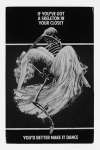Arnulf
Rainer
Rainer's overpaintings and self-portraits have redefined the boundaries of abstraction, making him a pivotal figure in the Post-War European art scene. If you're looking for Arnulf Rainer original prints and editions for sale or would like to sell, request a complimentary valuation and browse our network's most in-demand works.
Arnulf Rainer art for sale
Discover Arnulf Rainer prints for sale, exclusively available through our private network of collectors. Explore signed and unsigned screenprints, lithographs, digital prints, and rare editioned proof prints by era-defining blue chip artists.
Sell Your Art
with Us
with Us
Join Our Network of Collectors. Buy, Sell and Track Demand
Biography
Arnulf Rainer emerged as a self-taught artist in post-war Austria, quickly establishing himself as a radical voice in the European art world. Born in Baden, Austria, in 1929, Rainer's early artistic journey began with a stint at the Vienna Academy of Fine Arts, which he abandoned after only three days, believing that academic training would stifle his creativity.
In the early 1950s, Rainer's work was heavily influenced by Surrealism, leading him to co-found the Hundsgruppe (Dog Group) in 1950 with Ernst Fuchs, Arik Brauer, and Josef Mikl. This period marked the beginning of Rainer's exploration of automatic drawing and his interest in the subconscious mind.
By 1954, Rainer's artistic focus shifted dramatically towards what he termed Destruction of Forms. This new direction would become the foundation for his most recognisable and influential work - his overpaintings.
Rainer's artistic evolution took a significant turn in the late 1950s when he began his series of overpaintings. This technique involved partially or completely covering existing artworks, including reproductions of old master paintings and his own earlier works, with new layers of paint. This process of destruction and creation became a hallmark of Rainer's oeuvre, reflecting his interest in the tension between concealment and revelation.
In the 1960s, Rainer created his Face Farce series. This body of work features photographed self-portraits in which Rainer exaggerated his facial expressions, later overpainting these images with ink, oil, or crayon. This process of altering his own likeness allowed Rainer to explore themes of self-destruction and transformation, what he referred to as 'accentuated self-reproductions'.
The 1970s marked a period of international recognition for Rainer. He represented Austria at the Venice Biennale in 1978 and had major exhibitions at the Centre Pompidou in Paris and the Stedelijk Museum in Amsterdam. During this time, Rainer also began working on his Death Masks series, overpainting photographs of death masks of historical figures, further interrogating themes of mortality and transformation.



















